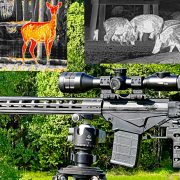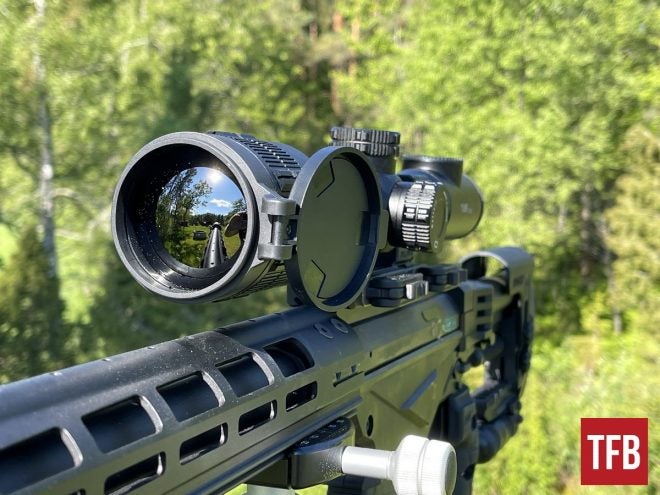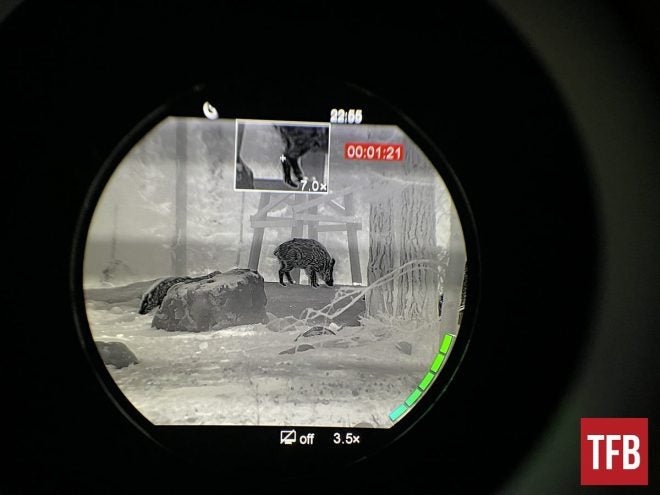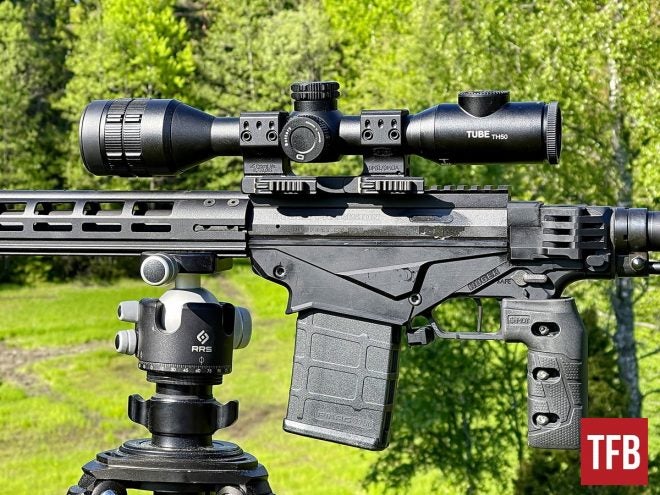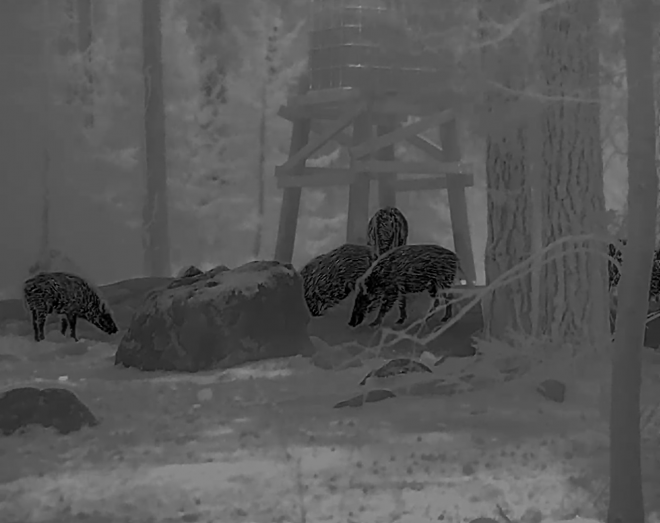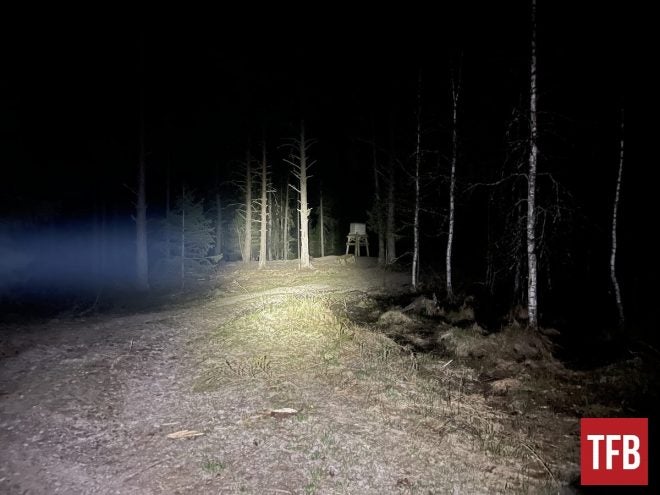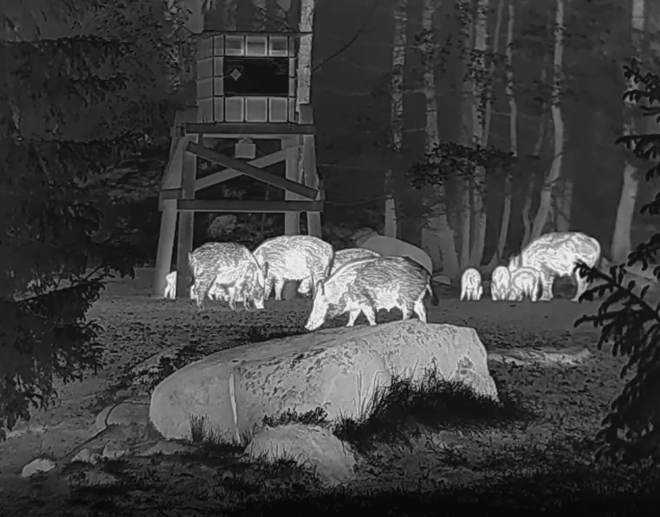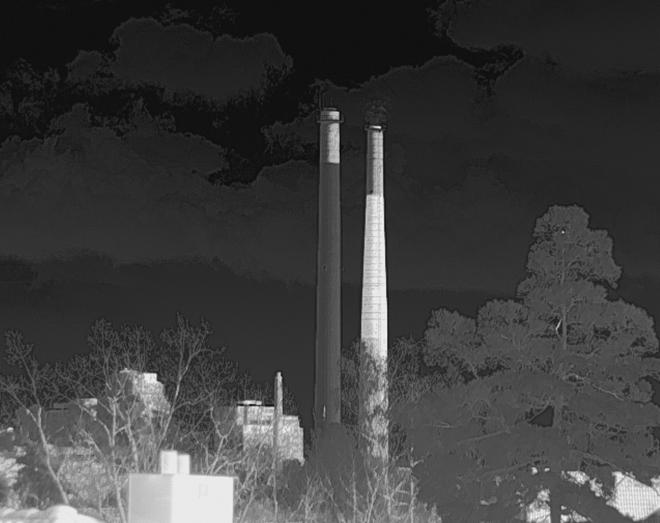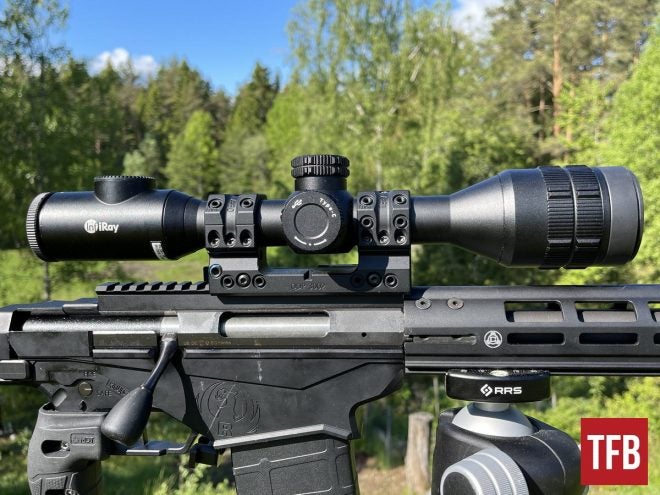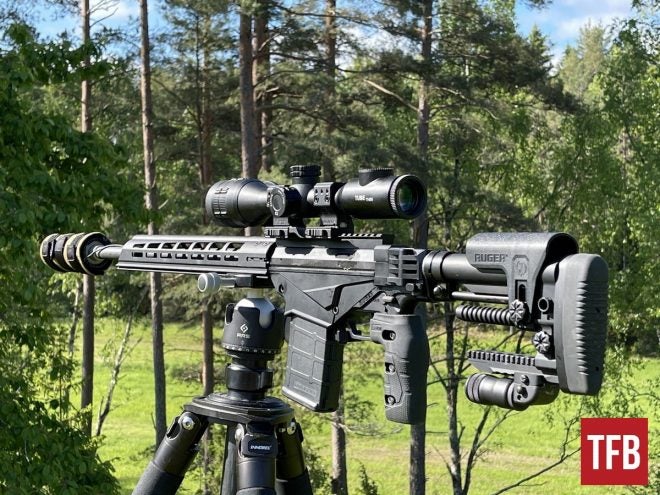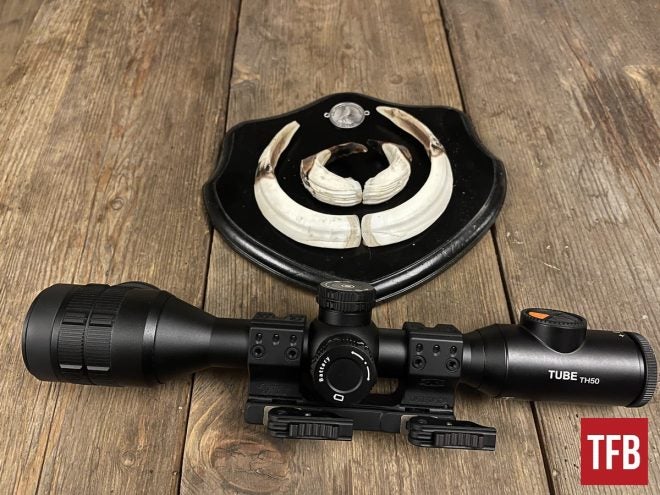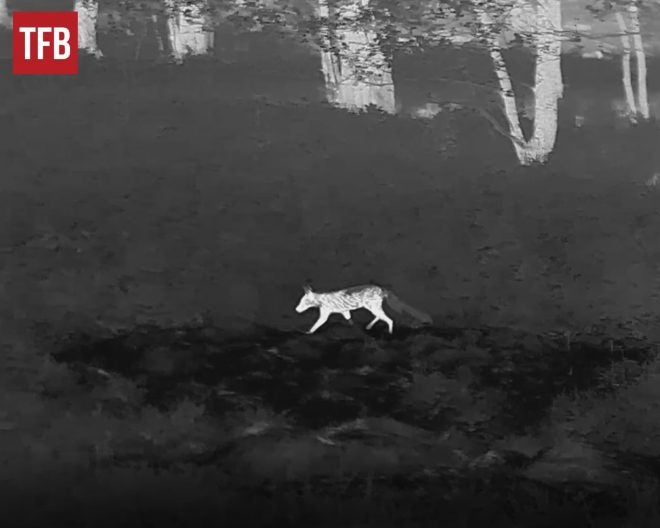This is a review of the InfiRay Outdoor Tube TH50 Thermal Imaging Riflescope. In the U.S. it’s called the Bolt-C Series. This is InfiRay’s brand new flagship model, with 50 mm optics and a powerful 12 μm 640×512 thermal sensor. The image is displayed on a round 1.03” Micro-OLED screen, with a 2560×2560 pixels resolution. All this technology has been cramped into a traditional-looking riflescope, which can be mounted using standard 30mm rings like any normal day scope.
InfiRay Outdoor @ TFB:
- TFB Review: InfiRay FH35R Finder II Thermal Monocular
- Friday Night Lights: PSQ-20 vs InfiRay JerryF – Fusion Monocular Duel
- Friday Night Lights: iRay RH25 Rico Micro – All-In-One Thermal Monocular, Clip-On, Weapon Sight
- New iRay RICO Alpha Thermal Weapon Sight
Here you can see the Tube TH50 mounted on a Ruger Precision Rifle. The rifle is chambered in .308 Win and has some upgrades, like a Timney trigger. The suppressor is an ASE Utra from Finland and the suppressor cover is from Cole-Tac Europe.
Below: The Tube TH50 looks like a normal riflescope, but it isn’t. Here you’re looking into the 50mm Germanium lens, an optical lens made of polished germanium. Lenses like these are rugged and resistant to corrosion, ideal for harsh environments and applications where there is constant exposure to the elements. Perfect for hunting!
Ergonomics
The housing is made out of aluminum, with a plastic hinged cover to protect the front lens. The turrets are not used for windage and height adjustments as a traditionalist might think, instead they hide the battery compartment, the USB-C connection, or work as a scroll and control wheel for functions like zooming. On top of the ocular, there are four buttons to control on/off, display settings, video recording and other software functions – easy to use and understand. It’s hard for me to judge what is a “perfect level” of technology here, as some users (typically younger) want more functions and some (typically older generation) want an on/off button and that’s it. Let me just say that the TH50 has more functions than I used, like the gravity sensor and a digital compass. The adjustable diopter has a rubber ring around it for comfort and friction. The eye relief is 50mm. The focus wheel is not too stiff, not too light.
Below: Looking into the ocular with an iPhone.
Technical Specifications
According to InfiRay, a target sized 1.7m×0.5m can be detected at 2,361 meters (2,582 yards), using the uncooled Vox sensor. Although that figure really has no relevance in your day-to-day use, it gives you an idea of how sensitive and powerful these devices are at discovering changes in heat. The NETD is ≤40mK according to InfiRay (the lower the better). The frame rate is 50 Hz.
The maximum recoil power is 1,000 g/s², unfortunately, I don’t know exactly what that translates into in terms of calibers. The weight without the optional 18500 battery is just under 1 kg (940g). Dimensions are 370×85×75 mm. The IP rating is IP67.
The 2560×2560 pixels screen provides a clear image that is pleasant to look at, even at night. The screen is not actually round, it has been masked but it works great.
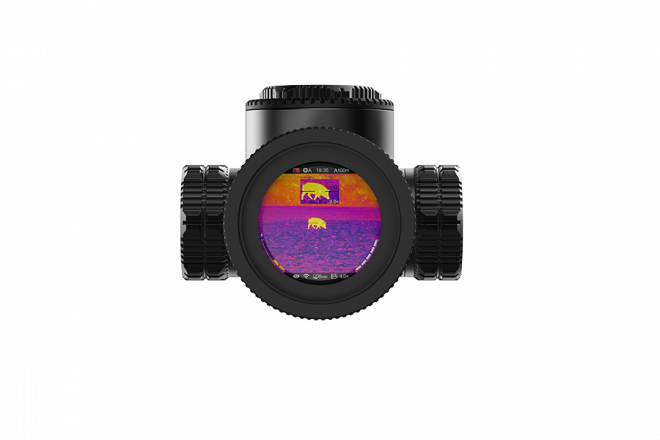
Picture from InfiRay Outdoor
There are two built-in 18650 batteries and one replaceable 18500 battery. I don’t have an exact figure for the battery life, but it seemed more than reasonable and I never run out in an evening. InfiRay claims 8 hours. Just add more juice through the USB-C if you like.
Testing the InfiRay Tube TH50
TFB got the Tube TH50 a few months ago, so it has seen used in winter, spring and now summer. I’ve tried it around the house, around the countryside, on the shooting range, at wildlife park and on various scouts and hunts.
The mount is a Spuhr QDP-3002. I love this mount for testing since it has a quick attach/detach feature (works really well in darkness also) and holds the zero like nothing else I’ve tried. There are mounts included when you buy the TH50 (at least I had them in my box), but I prefer to use something I know.
TFB’s testing rig allows us to do various evaluations and recordings of images and videos where hunting and firearms are forbidden or inappropriate for various reasons. This is a Picatinny rail camera mount on a gimbal on a carbon fiber tripod. The TH50 has 32GB of memory so you can record 48 hours of video and almost an endless amount of still images. These videos can be transferred to your smartphone or computer, and there are a few examples below.
Zeroing the riflescope is fairly straightforward, but I won’t go into the details here. You can check the manual which can be found here.
Image Quality
The image quality and thermal performance are perhaps the most important factors of all, don’t you agree? After all, we expect units like this to “just work” and be easy to use. After that we just want a perfect image, the zero to be kept at all times and endless battery time. For me, InfiRay’s thermal monoculars have been a little “hit or miss” in terms of image quality. For instance, I liked the InfiRay FH35R Finder II Thermal Monocular. This is the first InfiRay riflescope I review, and I’m happy to say that the image quality is great!
For some reason, I really liked the black hot on wild boar, and I’m typically a white or red hot kind of guy. It made the wild boar look like hedgehogs, but it worked. The temperature below is around +8C and some moisture from the ground.
Below: Just so you understand, here is the same place and time. SureFire flashlight and iPhone. Using a thermal really helps, let’s just agree to that.
Below: This is taken just when the sun is going down, in the summer, but most of this rather large wild boar family was visible to the eye. The thermal has no issues finding them, note the ones in the forest as well. The distance is about 150 meters to the closest one.
Moving closer to the feeding station (it’s not a house). Watch the videos below!
Below: Some complain I get too close to the animals, which is not representative of their hunting. Well, here’s a hare at at least 120 meters, probably more. Note the PiP function. Picture was taken by iPhone.

If both batteries are installed in the Tube device, two battery icons are displayed on the right of the status bar below the image, with the replaceable battery icon on the left and the built-in battery icon on the right. The battery from which the device is powered is displayed in green, and inactive – in gray. If there is no replaceable battery in the device, only the green icon of the built-in battery is displayed on the right.
Video version.
Below: Red hot in a wildlife park, distance about 30 meters. Sunshine and some clouds, daytime. Note the not-so-obvious deer in the back, around 200 meters away.
The traditional two chimneys. Daytime, about 1250 meters.
The TH50 has a built-in Wi-Fi module and a supporting app connection.
The TH50 blends in.
Video with wild hogs around 40 meters away. Demonstrating different color palettes and the “soft zoom”. The Tube TH50 can be zoomed between 3.5-14x. Each time you rotate the rotary encoder, the image is zoomed in or out by a factor of 0.35.
Check out this Moose as well, filmed from only 5 meters.
Apart from the TH50 itself, in the box you will find an eyeshade, mounting for Picatinny rail, IPB-3 portable bag, a USB-C cable with a power adapter, a lens cleaning cloth and a heated target for zeroing.
Price & Availability
The Tube TH50 is available in Europe and Australia already, and will soon be launched in the USA. The price in Europe seems to be in the region of around 4,500 EUR, about 4,800 USD. It is Made in China.
Conclusion
Yes, I can recommend the InfiRay Tube TH50 if you’re looking for a high-end thermal riflescope. There is a TH35 model as well with lower specifications, which I have not tried. Although the circular display is just masked to look round I still like it, it works and feels natural to the eye. The screen resolution is very good and there is no uncomfortable noise.
I really liked the image quality, you get good detail on the target but also the surroundings. Previous models (the InfiRay monoculars I’ve tried) have kind of enhanced the target at the sacrifice of the surroundings, but the TH50 is much better in providing an overall good image. They have a more powerful thermal sensor at hand here, but it seems InfiRay worked with the algorithms as well and succeeded.
Below: As I was watching some wild boar, this little fella showed up. A healthy-looking fox at about 35 meters distance. Note that the tail is not very hot.
It’s difficult to measure accurately, but there seems to be some latency in the image. I don’t really have any means to prove it, but if you’re trying to hit a moving target it means that you will see everything a little later than it actually happened. In other words, be aware and take this into account, as every tenth of a second would make a big difference.
The tactile feel in the rotary encoder is good, but the sound from the clicks may scare some animals away if they are close (although I had no issues).
Are there any negatives? The start-up time is fairly long, about 16 seconds from pushing the on button. The feel in the buttons could be better as well. It’s not always easy to understand if you really pressed record or not, but overall this is a really good package.
Below: A more traditional hunting rifle, with the Tube TH50 on.
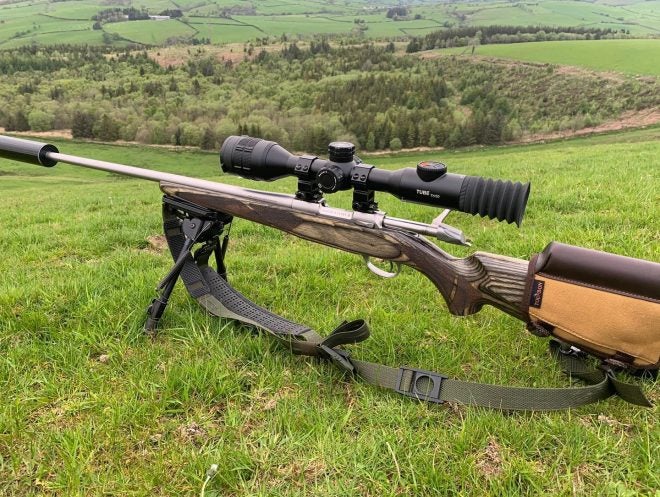
Picture courtesy of Scott Country International
Here is a direct link to the Infiray Tube TH50: https://www.infirayoutdoor.com/thermal-imaging-riflescope-tube-th50-series_p80.html
We look forward to your comments in the section below.
We are committed to finding, researching, and recommending the best products. We earn commissions from purchases you make using the retail links in our product reviews. Learn more about how this works.


